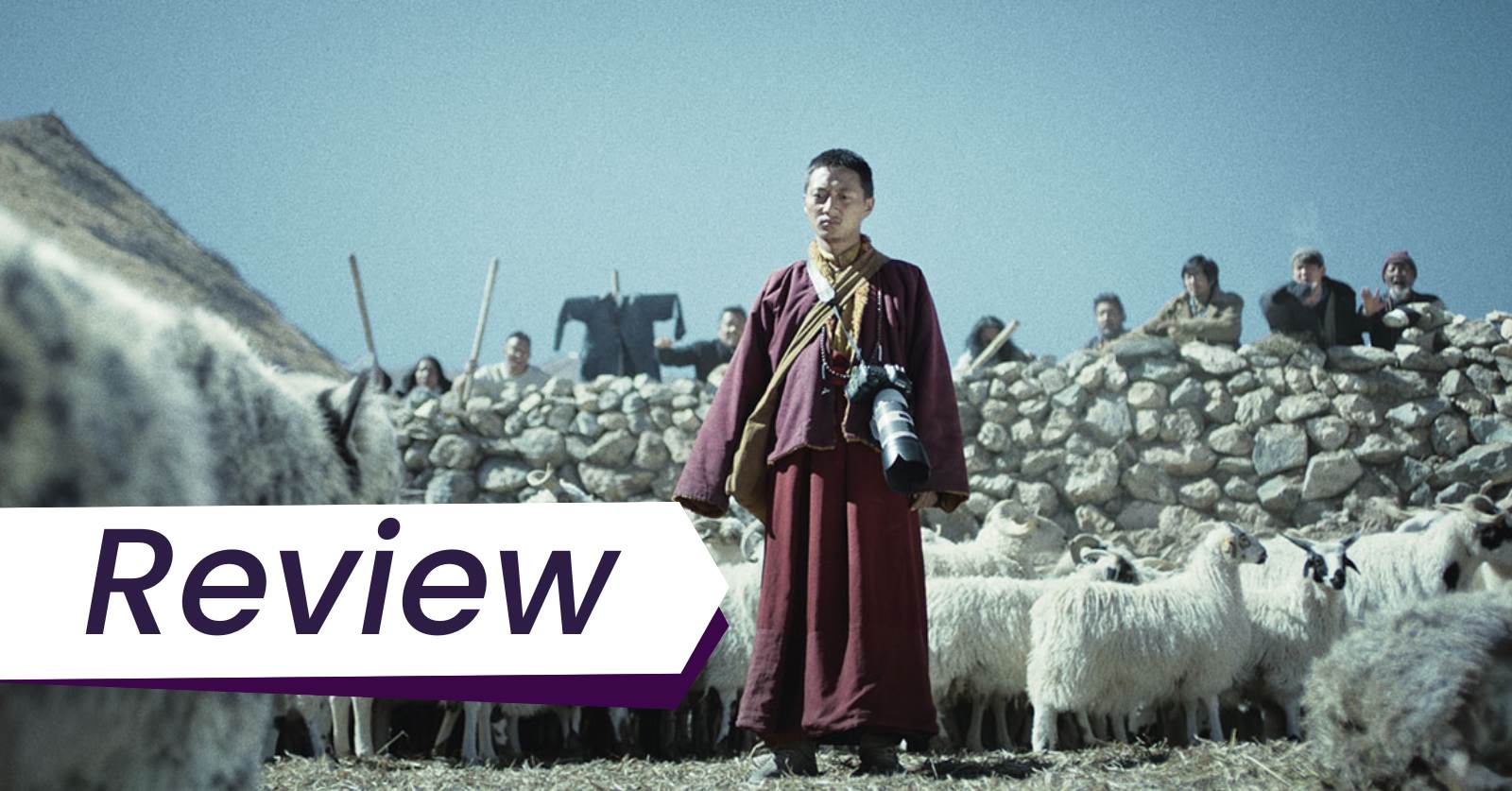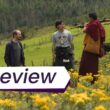Set in the high altitudes of the Tibetan Plateau, against stunning mountains and lakes, Pema Tseden’s final film Snow Leopard is a call for empathy, not just for animals but other humans.
Find all of our TIFF 2023 coverage here
Sign up for email updates about TIFF 2023.

Discover one film you didn’t know you needed:
Not in the zeitgeist. Not pushed by streamers.
But still easy to find — and worth sitting with.
And a guide to help you do just that.
In the late Pema Tseden’s (Balloon, TIFF ‘19) final film, Snow Leopard, the titular animal may be known as one of the most ferocious on the planet, but it’s the humans that need to learn a little tenderness. Set in the high altitudes of the Tibetan Plateau, against stunning mountains and lakes, Snow Leopard is a call for empathy, not just for animals but other humans.
When journalist Wang Xu (Xiong Ziqi) gets word from his childhood friend, now known as the Snow Leopard Monk (Tseten Tashi), that a snow leopard is in the monk’s brother’s (Jinpa) backyard, he grabs a camera crew and heads for the mountains. Wang Xu arrives to find a snow leopard penned in with a herd of rams, nine of which it killed. Although snow leopards are a protected, endangered species in China, the brother refuses to let the snow leopard free until the government compensates him for his dead rams. If he doesn’t get compensated, he threatens to kill the snow leopard — illegally — as retribution. It won’t fix his money troubles, but a dead snow leopard feels like a twisted form of justice to him.
The Snow Leopard Monk
Set over a couple of tense days, the film is partly about the friendship between Wang Xu and the Snow Leopard Monk and partly about how capitalism hardens people into ferocious beasts. In an early scene, Snow Leopard Monk’s brother threatens to kill the snow leopard then and there in a fit of rage. The Snow Leopard Monk reacts by jumping into the pen and facing off against the snow leopard, who seems to turn docile in his presence.
There’s a terrific shot, photographed by cinematographer Matthias Delvaux, of the snow leopard and Snow Leopard Monk meeting face to face as the journalists and the monk’s family freak out in the background. After the group successfully hauls the monk out of the pen with a lasso, the cameraman hilariously tries to lure the monk back into the pen so he can remember to capture it on camera this time.
As the film progresses, we learn how the Snow Leopard Monk got his name and the criticism he receives from other monks who think he spends too much time photographing animals instead of praying. As they wait for the government officials to compensate the monk’s brother, Wang Xu and Snow Leopard Monk have time to hang out, talk, and look at the monk’s photos. It’s a calm, gentle, warm exchange. And the more the pair see and learn about snow leopards, the more they admire them and see them as less of a danger.
Broad comedy and the extremes of human nature in the film Snow Leopard
By contrast, the monk’s brother grows increasingly angry, trying one futile tactic after another to vindicate himself over being hard-done-by more so than to fix any problems. He hires a forklift driver to drive to his remote home to remove the rams from the pen. He repeatedly threatens to kill the snow leopard if the government officials don’t do what he wants, legal repercussions be damned. And he yells at his wife. He’s the antithesis of the quietly contemplative, animal-loving Snow Leopard Monk.
Although Snow Leopard has some broad comedy, Tseden never pushes his character into cartoonish territory. We understand the characters’ economic and legal realities, and consequently, we understand the monk’s brother’s irrational behaviour. The film sometimes beats this point to death with a few too many repetitive scenes to make the point, but it’s a lovely ride.
Snow Leopard drops us into a beautiful world and its customs that most of us would never have access to. It’s a social justice commentary wrapped inside a comedic hangover movie with quiet moments of contemplation. There is also some incredible footage of snow leopards: some are real, and some must be very expensive CGI.
More Pema Tseden: Read Brett Pardy’s 2019 review of Balloon.
More films like Snow Leopard: Read our TIFF 2023 reviews of A Road to a Village and The Monk and the Gun.
You may also like our podcast on Jerzy Smolikwoskis’ Eo and the challenges of creating empathy for animals on screen.
More from TIFF 2023: Read all of our TIFF 2023 coverage.

